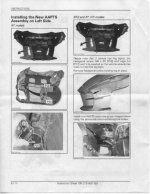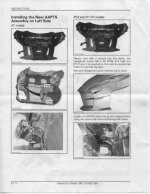Magdave
New member
So I am wondering if anyone else thinks the ambient temp sensor on RT's may be part of the fix for the hot engines? My thought is the location near the radiator makes it heat soak 5-10deg above true ambient temp. I know mine does. Does that play into the fuel mapping? My mind tells me EFI cars lean the mixture the hotter the ambient temp is thus if the sensor is incorrectly reading it is it leaning the fuel mapping. Thoughts? :thumbup:


